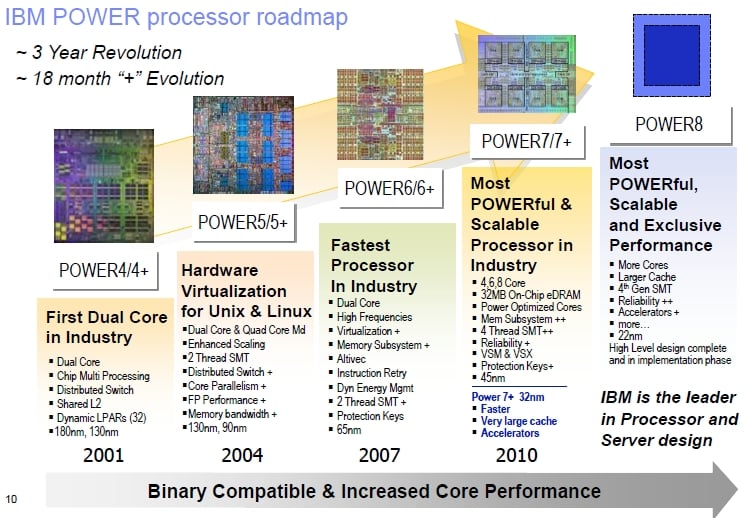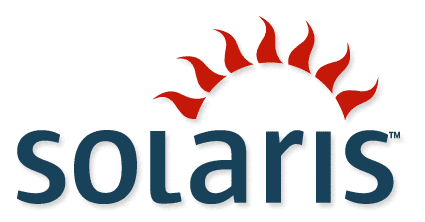
An image speaks a thousand words, late today with a blue box for a future, just before the Oracle SPARC T4 release?

Thank you for the IBM August 2011 POWER Roadmap tha the public marketplace has been begging for... did we miss the POWER7+ release??? A POWER 7 February 2010 launch would have POWER 7+ August 2011 launch (and today is August 31, so unless there is a launch in the next 23 hours, it looks late to me.)
Sketchy details on something possibly 3 years out??? No commitment beyond (almost) 3 years for POWER???
POWER has been quite interesting, for being cobbled together via multi-chip modules. Certainly a less risky approach, but a more expensive approach which does not offer flexibility of mass-production. Of course, there was never a delusion in the standard POWER family of trying to "make it big" - those days are long gone, with the former IBM partnership with Apple and Motorola.
It is nice to see embedded POWER in some video game machines and cell phones, but we have not seen a commodity desktop chip in a long time.

SPARC Open CPU Architecture Roadmap
With multiple vendors developing SPARC, where anyone can develop SPARC processors, without resriction - IT executives and government organizations may feel more comfortable with another type of roadmap.

It would be nice if IBM the confidence in POWER that Oracle has in SPARC, who released a 5 year roadmap, where Oracle has been providing continual public updates as SPARC benchmarks have been met.
The new SPARC T processors have been on-time for every generational launch for the past 5 years, with Solaris Update 10 already leaked and T4 processors about to be released.
With the decision to invest in a processor based upon a single piece of silicon, the ability to mass-produce at lower cost created low-cost options for SPARC in the past, at a time when few companies were trying to produce low-cost, embedded and commodity processors.
With SPARC, we have not seen a commodity desktop workstation for the education and scientific markets in awhile, either. After the Ultra 45 Workstation and migration of the SunRay UltraThin Clients from MicroSPARC IIe, that was the last of a worthy line of systems.
The market is hoping to see something from another OEM vendor, since one might suspect Oracle is not terribly interested in anything other than servers, and there always seems to be an OEM vendor releasing a SPARC compatible portable or deskop. The upcoming T4 is a terrific candidate.
Network Management Considerations
There are multiple vendors who design and have been encouraged to design SPARC, from the United States, to the U.K., to Africa, to Europe, to Russia, to China, and to Japan. The SPARC application market is best when there are multiple governments, educational facilities, companies, and startups who are competing to produce a better (or, at least, available) design.
Markets with competition and open designs have always been better for the industry as well as the customers. There is a reason why Solaris is trusted in the telecommunications arena and has nearly 2x the number of applications than combined AIX and HPUX.




